| Listing 1 - 10 of 124 | << page >> |
Sort by
|
Book
ISBN: 3031441656 Year: 2024 Publisher: Cham : Springer Nature Switzerland : Imprint: Springer,
Abstract | Keywords | Export | Availability | Bookmark
 Loading...
Loading...Choose an application
- Reference Manager
- EndNote
- RefWorks (Direct export to RefWorks)
This open access book presents technologies and methods of lightweight system design to support future low-emission aviation in achieving climate targets. It will be shown how reduction of weight and aerodynamic drag affects the energy consumption of commercial aircraft and what characterizes lightweight system design. Methods, design principles, production technologies and options for functional integration are available for more energy-efficient aircraft. Research results from the last decade are presented, which are intended to encourage the reader to further research and, above all, to implement them in future aircraft. The Author Prof. Dr.-Ing. Martin Wiedemann heads the DLR Institute of Lightweight Systems and helds a professorship for Adaptive Systems at the Technical University of Braunschweig. He combines his experience from 15 years in the aviation industry with his research expertise in the field of lightweight system design, a combination of lightweight composite structures and function integration. Martin Wiedemann is board member in the Cluster of Excellence "Sustainable and Energy Efficient Aviation - SE2A" at the Technical University of Braunschweig and board member in the German wind energy research association. He is co-leader of the DLR Alliance for Lightweight Production Technologies and member of the German CFRP Fuselage Forum, a DLR cooperation with Airbus.
Aerospace engineering. --- Astronautics. --- Materials. --- Sustainability. --- Aerospace Technology and Astronautics. --- Materials Engineering.
Book
ISBN: 9783031533976 3031533976 Year: 2024 Publisher: Cham : Springer Nature Switzerland : Imprint: Springer,
Abstract | Keywords | Export | Availability | Bookmark
 Loading...
Loading...Choose an application
- Reference Manager
- EndNote
- RefWorks (Direct export to RefWorks)
This open access book celebrates the decennial of the Department of Industrial Engineering of Università di Napoli Federico II, Italy. It covers the main research achievements developed at the department in the fields of aerospace, marine, energy, statistical, mechanical and management engineering. Five pre-existing departments merged in 2013, and the research results are here summarized to certify how important it was to join skills, expertise, and projects. The industrial engineering area is huge, but it is now dominated by the need to conceive and analyze new solutions, human and climate oriented to face with the actual challenges which dictate the new paradigm, which evolved from “is it feasible?” to “is it compatible with the environment and the human beings?”. There is still a lot to do, but the contents of this book demonstrate that the first steps have been done. All the researchers of the department have contributed to this book, more than 140 authors, and thus, it is the collective outcome of the path they were able to perform all together, including administrative officers and technicians. It highlights the international relevance and multidisciplinarity of research at the university as well as the planned research lines for the next years. .
Industrial engineering. --- Production engineering. --- Statistics. --- Education. --- Aerospace engineering. --- Astronautics. --- Industrial and Production Engineering. --- Education Science. --- Aerospace Technology and Astronautics.
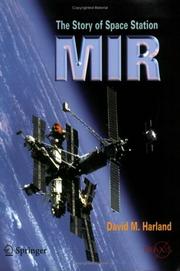
ISBN: 1281148237 9786611148232 0387739777 0387230114 Year: 2005 Publisher: Berlin ; New York : Chichester, UK : Springer ; Published in association with Praxis Publishing,
Abstract | Keywords | Export | Availability | Bookmark
 Loading...
Loading...Choose an application
- Reference Manager
- EndNote
- RefWorks (Direct export to RefWorks)
This successor edition picks up the story where the first edition left off in 1997, and runs through to Mir’s de-orbiting in March 2001, providing the definitive account of the Mir Space Station. The book reviews the origins of the Soviet space station programme, in particular the highly successful Salyuts 6 and 7, describes Mir’s structure, environment, power supply and maneuvering systems, and provides a comprehensive account of how it was assembled and how it operated in orbit. Tells how the Soviet Union's experience with a succession of Salyut space stations led to the development of Mir, which was assembled in space, piece by piece, between 1982 and 1996 and became an international research laboratory whose technology went on to form the 'core modules' of the International Space Station.
Mir (Space station) --- Astronomy. --- Astronautics. --- Astrophysics. --- Popular Science in Astronomy. --- Aerospace Technology and Astronautics. --- Astronomy, Observations and Techniques. --- Space Sciences (including Extraterrestrial Physics, Space Exploration and Astronautics). --- Astronomical physics --- Astronomy --- Cosmic physics --- Physics --- Space sciences --- Aeronautics --- Astrodynamics --- Space flight --- Space vehicles --- Aerospace engineering. --- Observations, Astronomical. --- Astronomy—Observations. --- Space sciences. --- Science and space --- Space research --- Cosmology --- Science --- Astronomical observations --- Observations, Astronomical --- Aeronautical engineering --- Astronautics --- Engineering
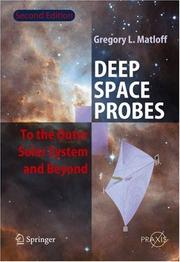
ISBN: 1280617489 9786610617487 3540273409 3540247726 3642063926 Year: 2005 Publisher: Berlin ; New York : Chichester, UK : Springer ; Published in association with Praxis Pub.,
Abstract | Keywords | Export | Availability | Bookmark
 Loading...
Loading...Choose an application
- Reference Manager
- EndNote
- RefWorks (Direct export to RefWorks)
The Space Age is nearly 50 years old but exploration of the outer planets and beyond has only just begun. Deep-Space Probes Second Edition draws on the latest research to explain why we should explore beyond the edge of the Solar System and how we can build highly sophisticated robot spacecraft to make the journey. Many technical problems remain to be solved, among them propulsion systems to permit far higher velocities, and technologies to build vehicles a fraction of the size of today’s spacecraft. Beyond the range of effective radio control, robot vehicles for exploring deep space will need to be intelligent, ‘thinking’ craft – able to make vital decisions entirely on their own. Gregory Matloff also looks at the possibility for human travel into interstellar space, and some of the immense problems that such journeys would entail. This second edition includes an entirely new chapter on holographic message plaques for future interstellar probes – a NASA-funded project.
Space probes. --- Deep space probes --- Probes, Space --- Space vehicles --- Astronautics. --- Astrophysics. --- Engineering. --- Aerospace Technology and Astronautics. --- Space Sciences (including Extraterrestrial Physics, Space Exploration and Astronautics). --- Automotive Engineering. --- Construction --- Industrial arts --- Technology --- Astronomical physics --- Astronomy --- Cosmic physics --- Physics --- Space sciences --- Aeronautics --- Astrodynamics --- Space flight --- Aerospace engineering. --- Space sciences. --- Automotive engineering. --- Science and space --- Space research --- Cosmology --- Science --- Aeronautical engineering --- Astronautics --- Engineering
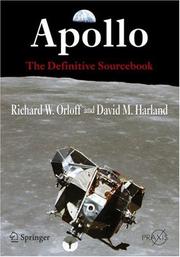
ISBN: 1280613823 9786610613823 0387376240 0387300430 Year: 2006 Publisher: Berlin : Springer,
Abstract | Keywords | Export | Availability | Bookmark
 Loading...
Loading...Choose an application
- Reference Manager
- EndNote
- RefWorks (Direct export to RefWorks)
On 25 May 1961, John F Kennedy announced the goal of landing an American man on the Moon by the end of the decade. This challenge forced NASA to review the planned lunar landing of a three-man spaceship named Apollo in the mid-1970s. In 1962, it was decided that a specialized vehicle would accompany the main spacecraft, to make the lunar landing while the mothership remained in lunar orbit. To send these vehicles to the Moon would require the development of an enormous rocket. Development was protracted, but in December 1968 Apollo 8 was launched on a pioneering mission to perform an initial reconnaissance in lunar orbit. When Apollo 17 lifted off from the Moon in December 1972, the program was concluded. Now, at long last, there is a real prospect of a resumption of human exploration of the Moon. This book provides an overview of the origins of the Apollo program and descriptions of the ground facilities, launch vehicles and spacecraft that will serve as an invaluable single-volume sourcebook for space enthusiasts, space historians, journalists, and programme-makers on radio and TV. It supplements tha other books that have focused on the politics and management of the Apollo program, the astronauts, and their training and exploits.
Space flight to the moon. --- Aeronautics --- Project Apollo (U.S.) --- Apollo Project (U.S.) --- United States. --- Progetto Apollo (U.S.) --- Flight to the moon --- Lunar expeditions --- Lunar flight --- Astronautics. --- Astronomy. --- Astronomy, Observations and Techniques. --- Aerospace Technology and Astronautics. --- Popular Science in Astronomy. --- Space sciences --- Astrodynamics --- Space flight --- Space vehicles --- Observations, Astronomical. --- Astronomy—Observations. --- Aerospace engineering. --- Aeronautical engineering --- Astronautics --- Engineering --- Astronomical observations --- Observations, Astronomical
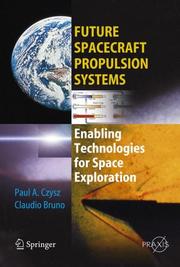
ISBN: 1280716606 9786610716609 3540376410 3540231617 Year: 2006 Publisher: Berlin ; New York : Chichester, UK : Springer ; Published in association with Praxis Pub.,
Abstract | Keywords | Export | Availability | Bookmark
 Loading...
Loading...Choose an application
- Reference Manager
- EndNote
- RefWorks (Direct export to RefWorks)
In Future Spacecraft Propulsion Systems the authors demonstrate the need to break free from the old established concepts of expendable rockets, using chemical propulsion, and to develop new breeds of launch vehicle capable of both launching payloads into orbit at dramatically reduced cost, and for sustained operations in low-Earth orbit. The next steps, they explain, to establishing a permanent "presence" in the solar system beyond Earth are the commercialisation of sustained operations on the Moon, and the development of advanced nuclear or high-energy space propulsion systems for solar system exploration out to the boundary of interstellar space. In the future, high-energy particle research facilities may one day yield a very high-energy propulsion system that will take us to the nearby stars, or even beyond. This is a timely and comprehensive book, putting spacecraft propulsion systems in perspective.
Space vehicles --- Astronautics. --- Propulsion systems. --- Space sciences --- Aeronautics --- Astrodynamics --- Space flight --- Interplanetary propulsion --- Space flight propulsion systems --- Space propulsion --- Propulsion systems --- Aerospace Technology and Astronautics. --- Astronomy, Observations and Techniques. --- Astrophysics and Astroparticles. --- Aerospace engineering. --- Observations, Astronomical. --- Astronomy—Observations. --- Astrophysics. --- Astronomical physics --- Astronomy --- Cosmic physics --- Physics --- Astronomical observations --- Observations, Astronomical --- Aeronautical engineering --- Astronautics --- Engineering
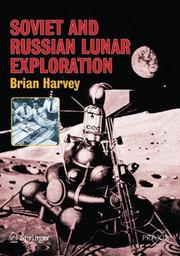
ISBN: 1281043060 9786611043063 0387739769 0387218963 Year: 2007 Publisher: Berlin ; New York : Chichester, UK : Springer ; published in association with Praxis Pub.,
Abstract | Keywords | Export | Availability | Bookmark
 Loading...
Loading...Choose an application
- Reference Manager
- EndNote
- RefWorks (Direct export to RefWorks)
Little is known of Soviet and Russian lunar exploration although, in fact, the Soviet Union/Russia: Sent the first spaceships past the moon, the first to hit the moon and the first to circle the moon Was first to soft land on and orbit the moon Was first to send a spaceship around the moon and recover it on Earth Came very close to sending a cosmonaut around the moon first Built and successfully tested, in Earth orbit, a lunar lander Pioneered sophisticated, precise high-speed reentries into the Earth's atmosphere Came close to perfecting a giant moon rocket, the N-1 Retrieved three sets of rock samples from the moon by automatic spacecraft Landed advanced roving laboratories that explored the moon for months on end, traveling 48km Designed long-term lunar bases. These were remarkable achievements requiring a considerable level of engineering sophistication and have a place in the contemporary story of astronautics. Recent landings on Mars use, essentially, the very techniques developed by Russia to land on and explore the moon in the 1960s and 1970s. As an acknowledged expert and author of several books on the Soviet and Russian space programme, Brian Harvey is ideally suited to cover not only the engineering and scientific side but also the human stories of the Soviet and Russian lunar programme. These include those of the cosmonaut squad that trained to land on the moon, but was stood down, and of the designers who tried to realise the dream of a Russian moon, from Tikhonravov to Mishin: a Soviet lunar programme was first proposed by designer Mikhail Tikhonravov in a children’s magazine in 1951 and he persuaded a sceptical Soviet leadership of the value of a moon programme. Following Sputnik, the first lunar flights quickly achieved the key goals of hitting, circling and photographing the moon in 1959. The Soviet Union achieved all the early ‘firsts’ in lunar exploration, such as soft landing and orbiting the moon, and Brian Harvey will recount the frantic efforts to rival America’s Apollo and the dramatic hours of 21st July 1969, when Russia tried to soft land Luna 15 in the Sea of Crises even as Armstrong and Aldrin explored the moon in the nearby Sea of Tranquility.
Astronautics. --- Space sciences --- Aeronautics --- Astrodynamics --- Space flight --- Space vehicles --- Moon --- Exploration. --- Astronomy. --- Popular Science in Astronomy. --- Aerospace Technology and Astronautics. --- Astronomy, Observations and Techniques. --- Aerospace engineering. --- Observations, Astronomical. --- Astronomy—Observations. --- Astronomical observations --- Observations, Astronomical --- Aeronautical engineering --- Astronautics --- Engineering --- Exploration --- History. --- Earth (Planet) --- Satellite
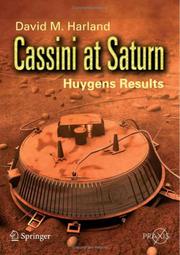
ISBN: 1281044172 9786611044176 0387739785 038726129X Year: 2007 Publisher: Berlin : Springer,
Abstract | Keywords | Export | Availability | Bookmark
 Loading...
Loading...Choose an application
- Reference Manager
- EndNote
- RefWorks (Direct export to RefWorks)
Cassini At Saturn – Huygens Results brings the story of the Cassini-Huygens mission and their joint exploration of the Saturnian system right up to date. Cassini entered orbit around Saturn June 2004 so this update includes 8 months of scientific data available for review, including the most spectacular images of Saturn, its rings and satellites ever obtained by a space mission. As the Cassini spacecraft approached its destination in spring 2004, the quality of the images already being returned by the spacecraft clearly demonstrated the spectacular nature of the close-range views that will be obtained. The book contains a 16-page colour section, comprising a carefully chosen selection of the most stunning images to be released during the spacecraft’s initial period of operation. The Huygens craft, released by Cassini, parachuted through the clouds of Saturn’s largest moon, Titan, in January 2005. David Harland tells the exciting story of the this craft’s journey to the surface of one of the most enigmatic bodies on the Solar System, the only moon to have a dense atmosphere and possibly lakes of liquid gas at -190ºC on its surface. Titan is considered to be an early Earth in deep freeze, possibly with the building blocks of life in its atmosphere. There will undoubtedly be enormous interest in the first results and images of Titan’s surface, and this book is the first incisive summary of this groundbreaking material.
Saturn probes. --- Saturn (Planet) --- Titan (Satellite) --- Exploration. --- Satellites. --- Popular works. --- Planetology. --- Observations, Astronomical. --- Astronomy --- Astronomy. --- Aerospace engineering. --- Astronautics. --- Popular Science. --- Popular Science in Astronomy. --- Astronomy, Observations and Techniques. --- Aerospace Technology and Astronautics. --- Space sciences --- Aeronautics --- Astrodynamics --- Space flight --- Space vehicles --- Aeronautical engineering --- Astronautics --- Engineering --- Physical sciences --- Astronomical observations --- Observations, Astronomical --- Planetary sciences --- Planetology --- Observations. --- Space probes --- Astronomy—Observations.
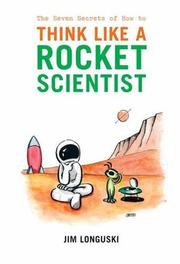
ISBN: 1280865830 9786610865833 0387682228 0387308768 1441921591 Year: 2007 Publisher: New York : Copernicus Books,
Abstract | Keywords | Export | Availability | Bookmark
 Loading...
Loading...Choose an application
- Reference Manager
- EndNote
- RefWorks (Direct export to RefWorks)
Would you like to know the methods that rocket scientists use—expressed in a way that you could apply to your everyday life? The book you are holding does just that. Illustrated are the methods (the 7 secrets) with anecdotes, quotations and biographical sketches of famous scientists, ideas from sci-fi, personal stories and insights, and occasionally a bit of space history. It turns out that rocket science is just common sense applied to the extraordinarily uncommon environment of outer space. (And that rocket scientists are people, too!).
Rocketry --- Creative thinking --- Aerospace engineering --- Aeronautical engineering --- Aeronautics --- Astronautics --- Engineering --- Creative thinking (Education) --- Creative ability --- Thought and thinking --- Astronomy. --- Astronautics. --- Popular Science in Astronomy. --- Aerospace Technology and Astronautics. --- Astronomy, Observations and Techniques. --- Astrophysics and Astroparticles. --- Space sciences --- Astrodynamics --- Space flight --- Space vehicles --- Aerospace engineering. --- Observations, Astronomical. --- Astronomy—Observations. --- Astrophysics. --- Astronomical observations --- Observations, Astronomical --- Astronomical physics --- Astronomy --- Cosmic physics --- Physics

ISBN: 1281734101 9786611734107 0387499814 0387341641 144192230X Year: 2008 Publisher: New York : [Chichester, UK] : Copernicus Books ; In association with Praxis Pub.,
Abstract | Keywords | Export | Availability | Bookmark
 Loading...
Loading...Choose an application
- Reference Manager
- EndNote
- RefWorks (Direct export to RefWorks)
The questions of our origin and cosmic abundance of life are among the most compelling facing humanity. We have determined much about the nature and origin of the Universe and our place in it, but with virtually all evidence of our origin long since gone from our world and an unimaginably vast Universe still to explore, defining answers are difficult to obtain. For all of the difficulties facing us however, the planet Mars may act as a ‘cosmic stepping stone’ in uncovering some of the answers. Although different today, the origin and early history of both Earth and Mars may have been similar enough to consider an origin to life on both. But because Mars’ planetary processes collapsed over three billion years ago – just as life was beginning to flourish on Earth – a significant and unique record of activity from that era perhaps relevant to the origin of life still resides there today. In recognition of this, both the US and Europe are currently engaged in one of the most ambitious programs of exploration ever undertaken. Built on our legacy of Mars exploration from the Viking era and before, a far-reaching, phased, program of robotic exploration now and over the coming decades aims at obtaining definitive answers about the origin and nature of the red planet and what it has to say about the origin and cosmic abundance of life. This book examines these issues in one of the most comprehensive treatments ever written about the planet Mars and our legacy of engagement with it, in language suitable for non-expert and expert alike. Opening chapters consider the question of life in the Universe and the origin of life on Earth and what challenges face us in uncovering defining answers. With a realization of its importance in this, the next section examines the legacy of our engagement with Mars. From Kepler’s work on its orbit, Schiaparelli’s efforts to resolve its surface features and NASA’s Mariner and Viking programs attempting to determine whether life resides upon the surface, Mars has remained elusive, yet always prodding and extending our capabilities in exploration and our perception of our place in the Universe. Subsequent chapters consider our current understanding of the planet and the recently devised comprehensive program for scientific exploration. All recent, current and upcoming missions and the latest findings are discussed in detail, providing our best understanding yet of a vast and ancient landscape indeed characterized by significant activity relevant to our quest and which also points to a planet far from dead today. Late chapters consider NASA and ESA plans for Mars over the next thirty years, increasingly shaped by the scientific successes to date, unprecedented public interest and by issues of planetary protection. And with mounting political interest, our program for Mars may culminate in a human mission to Mars, perhaps sometime around 2040. The greatest discovery, however, remains to be made. If even one microbe is found on Mars, it will reveal a cosmic context for life with Earth as one place among many harboring life, confirming our cosmic origins and destiny.
Life on other planets. --- Mars (Planet) --- Exploration. --- Red Planet --- Extraterrestrial life --- Planets --- Fermi's paradox --- Astronomy. --- Astronautics. --- Popular Science in Astronomy. --- Astronomy, Astrophysics and Cosmology. --- Aerospace Technology and Astronautics. --- Space sciences --- Aeronautics --- Astrodynamics --- Space flight --- Space vehicles --- Astrophysics. --- Aerospace engineering. --- Aeronautical engineering --- Astronautics --- Engineering --- Astronomical physics --- Astronomy --- Cosmic physics --- Physics
| Listing 1 - 10 of 124 | << page >> |
Sort by
|

 Search
Search Feedback
Feedback About UniCat
About UniCat  Help
Help News
News